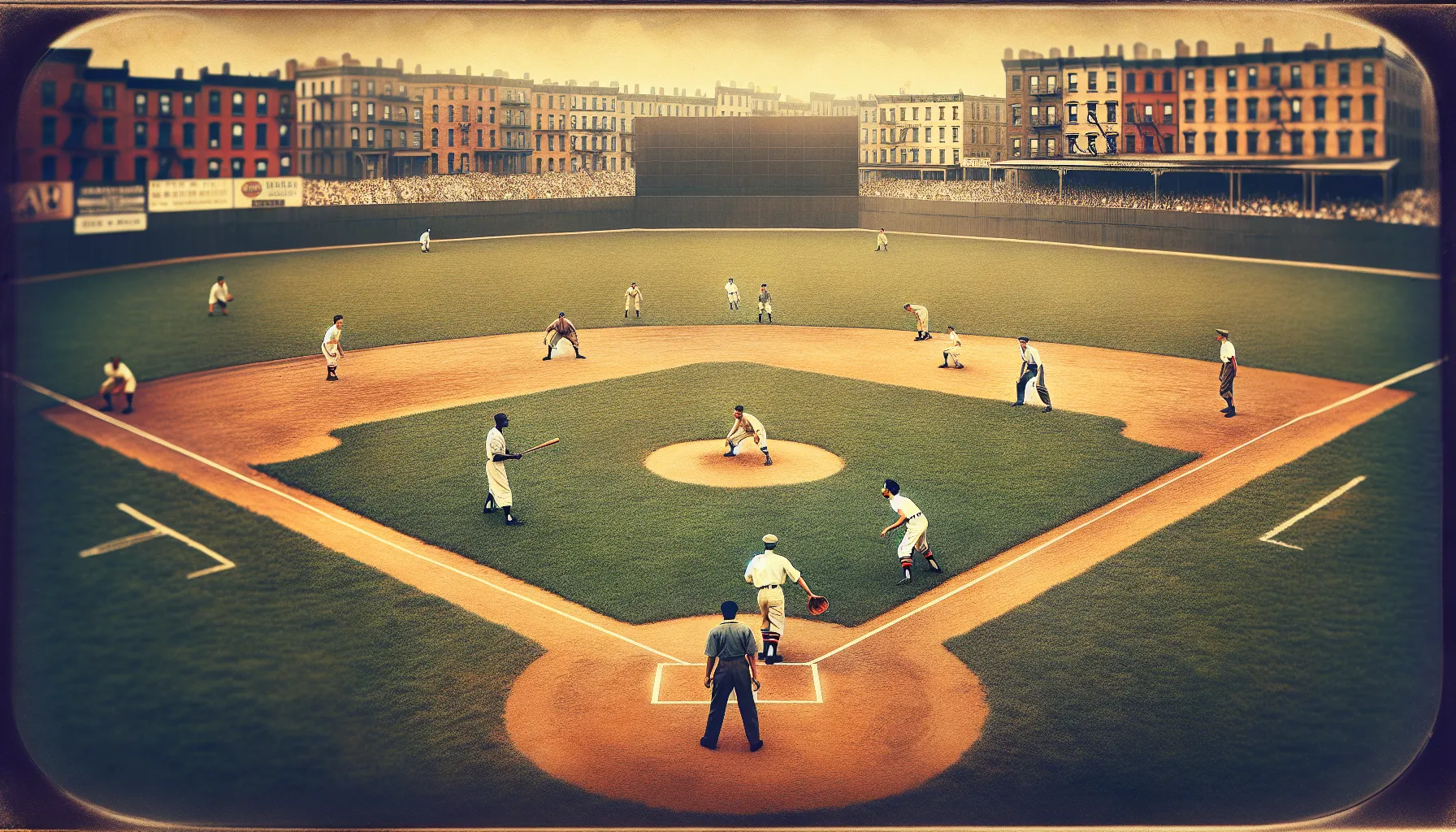Baseball is a game of strategy, teamwork, and precision, but what happens when your team is one player short? You might wonder if it’s even possible to step onto the field with just eight players. Whether you’re dealing with last-minute absences or organizing a casual game, this situation raises questions about rules, gameplay adjustments, and fairness.
While the official rules of baseball are designed for nine players per team, there are ways to adapt when you’re short-handed. Understanding how to navigate this scenario can help you keep the game alive without compromising the fun or spirit of competition. So, can you really play a baseball game with only eight players? Let’s explore the possibilities and what it means for your team.
Understanding Baseball Team Requirements
Baseball has specific rules regarding team composition that influence gameplay. Knowing these requirements ensures proper adherence to regulations and promotes fair play.
Standard Player Count In Baseball
A standard baseball team consists of nine players on the field. Each player has an assigned position, including pitcher, catcher, four infielders (first base, second base, third base, and shortstop), and three outfielders (left field, center field, and right field). These positions ensure every area of the field is covered, supporting both offensive and defensive strategies.
This number directly aligns with the official rules of Major League Baseball (MLB) and most organized leagues, which require nine players to start a game. However, recreational or informal games often adapt this number based on participant availability.
Importance Of Regulation Team Size
Playing with a regulation team size is essential for balance and strategy. Nine players provide adequate coverage for defense while allowing substitutions and proper rotation of batting and fielding roles. Missing even one player alters the dynamics, increasing gaps in defensive coverage and burdening other teammates with extra responsibilities.
In competitive scenarios, fewer than nine players can lead to forfeits under league rules. Informally, adjustments like reshuffling positions or reducing the number of outfielders are common solutions to accommodate eight players without significantly compromising gameplay.
Exploring The Scenario: Playing With 8 Players

Playing baseball with eight players is possible, but it requires adjustments to maintain gameplay quality. You must address challenges, modify field positions, and consider rule impacts to adapt to this setup effectively.
Challenges Of Playing With Fewer Players
Using only eight players leaves one defensive position unfilled, creating coverage gaps. Outfield coverage becomes notably weaker since removing a player often results in either two outfielders or an unfilled infield position. This impacts defense, making it harder to catch fly balls or manage ground balls effectively.
Endurance becomes a factor as players take on more defensive responsibilities and run longer distances during gameplay. You may also encounter difficulty maintaining balance in your batting lineup, as fewer players rotate through at-bats.
Adjusted Field Positions And Strategies
Shifting field positions is essential when playing with eight players. You can omit the right fielder or the second baseman, depending on your team’s strengths and the opposing team’s likely hitting patterns. For example, against left-handed batters, eliminating the right fielder might expose vulnerabilities.
Using a shallow outfield alignment, where remaining outfielders cover more ground closer to the infield, can mitigate coverage issues. Infielders may also extend their zones to back up uncovered areas, prioritizing teamwork and cross-field communication.
Impact On Game Play And Rules
Playing with eight players in official games may lead to rule violations or enforce a forfeit in some leagues, given that most regulations mandate nine players per team. In informal or practice settings, you can adapt the rules. Players may rotate roles more frequently, or both teams might agree to reduce the number of innings to prevent exhaustion.
Scoring opportunities can increase for opponents, as fielding gaps provide them with more chances to place unchallenged hits. However, strategic positioning and cohesive teamwork can lessen these effects and sustain competitive gameplay.
Alternative Solutions In Short-Handed Games

Teams with fewer than nine players often explore creative solutions to sustain gameplay. These adaptations balance fairness and enjoyment, ensuring the game continues effectively.
Borrowing Players
You can borrow players from other teams or spectators if informal agreements are acceptable. This option allows filling critical defensive positions without compromising gameplay. For example, borrowing an additional outfielder can enhance field coverage, addressing gaps caused by an eight-player lineup. In casual setups, switching players between innings or sharing athletes across teams can also help maintain balance.
For competitive scenarios, verify league or tournament rules, as borrowing players from outside the original roster may breach eligibility requirements.
Modifying Game Rules For Flexibility
Adapting rules ensures fairness when playing short-handed. You could reduce the number of innings, shorten outfield dimensions, or omit specific positional requirements, such as the right fielder. Inform players about these changes beforehand to avoid confusion.
In batting lineups, you might allow players to re-enter due to a reduced roster. Alternatively, teams can agree on simplified walk rules or strikeout limits to accelerate innings and minimize physical strain. Use custom regulations strategically to preserve the competitive spirit.
Is It Still Baseball? Weighing The Experience

Playing baseball with eight players instead of nine alters the game’s structure, raising questions about its authenticity. Adjustments in team dynamics and strategies influence how closely the experience resembles traditional baseball.
Maintaining The Spirit Of The Game
Sustaining the essence of baseball requires preserving its core gameplay elements. Even with eight players, prioritizing strategic positioning helps maintain competitiveness. Redistributing defensive roles by eliminating a right fielder or second baseman supports balanced play. Shallow outfield coverage and expanded infield roles can offset missing players. Usage of agreed-upon informal rules, such as limiting base-stealing attempts or adjusting inning lengths, balances the reduced roster while keeping the integrity intact. Retaining elements like pitching duels and rewarding skillful hitting ensures the action feels authentic.
Addressing Competitive Fairness
Competitive fairness relies on adapting the rules equitably for both teams. Playing short-handed, especially in casual settings, demands transparency in modifications such as borrowed players or simplified scoring. Informing both teams about rule adjustments avoids disputes and ensures a mutual understanding. For league games, strict roster requirements often enforce player eligibility. Ensuring no undue advantage for either side through adjusted defensive formations or limited substitutions preserves fairness. Balancing gameplay without compromising competitiveness ensures participants experience the challenges and excitement reflective of true baseball.
Conclusion
Playing baseball with eight players is undoubtedly challenging but not impossible, especially in informal settings. By embracing strategic adjustments and fostering open communication, you can adapt to the situation while preserving the essence of the game. Whether it’s reshuffling positions, modifying rules, or relying on creative solutions, flexibility is key to maintaining fairness and enjoyment.
Ultimately, the spirit of baseball lies in teamwork, strategy, and the shared passion for the game. With the right approach, you can turn a short-handed lineup into an opportunity to test your skills and creativity on the field.
Frequently Asked Questions
Can you play baseball with only eight players?
Yes, you can play baseball with eight players, but adjustments are necessary. Most leagues require nine players for official games, so playing with fewer could lead to forfeits. For informal games, positions can be rearranged, such as omitting a right fielder or second baseman, to maintain gameplay.
What is the primary challenge of playing baseball with eight players?
The main challenge is reduced defensive coverage, particularly in the outfield, which can weaken defensive effectiveness. Players may also have to take on additional responsibilities, leading to increased physical strain and potential imbalance in the batting lineup.
What adjustments can be made for an eight-player baseball team?
Teams can shift defensive positions by removing less critical roles like the right fielder or second baseman. A shallow outfield alignment and expanded infield coverage can help minimize gaps. Informal rules or shortened innings may also be adopted to maintain enjoyment and competitiveness.
Are official baseball games permitted with eight players?
Most official baseball leagues require nine players, and playing with fewer may violate rules, resulting in a forfeit. It’s recommended to verify league regulations before attempting to play short-handed in a competitive setting.
How can teams maintain fairness with eight players?
To maintain fairness, teams should agree on rule modifications, such as positional adjustments or shortened innings, before the game begins. Transparency and mutual understanding of these adjustments are essential to keep the competitive spirit alive.
Can spectators or players from other teams fill in as substitutes?
Yes, borrowing players from other teams or spectators can help make up the numbers in informal games. However, in competitive settings, eligibility must follow league rules to preserve fairness and avoid penalties.
What are the physical demands on players with only eight on a team?
With fewer players, individual responsibilities increase, leading to greater physical strain and endurance requirements. To minimize fatigue, teams can reduce the number of innings or simplify certain rules, like walk limits, for a faster-paced game.
How does playing with eight players affect the game’s dynamics?
Playing with eight players changes the defensive and offensive structure, requiring strategic adjustments in positioning. While it offers a unique challenge, it may raise questions about the game’s authenticity, particularly in preserving competitive balance.
How can informal games adapt to fewer players?
Informal games can adapt by modifying rules, such as omitting specific positions, reducing innings, or shortening field dimensions. Clear communication with all players involved ensures smooth gameplay and avoids confusion over adjustments.
Is it possible to maintain the spirit of baseball with only eight players?
Yes, by preserving core elements like strategic positioning and competitive balance, teams can maintain the spirit of baseball. Transparency in rule changes and creative adaptations help ensure the game stays challenging and enjoyable for all participants.
